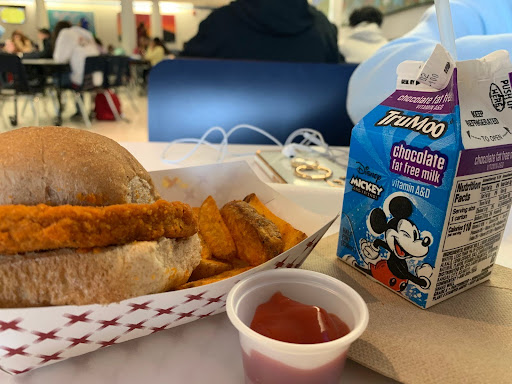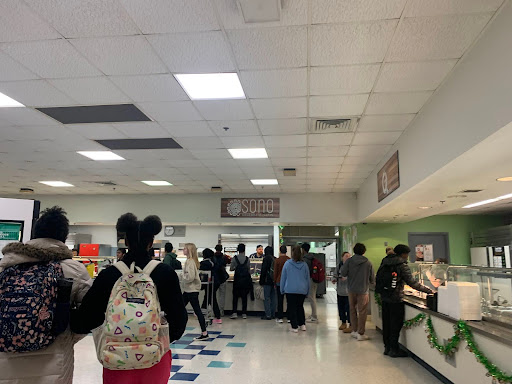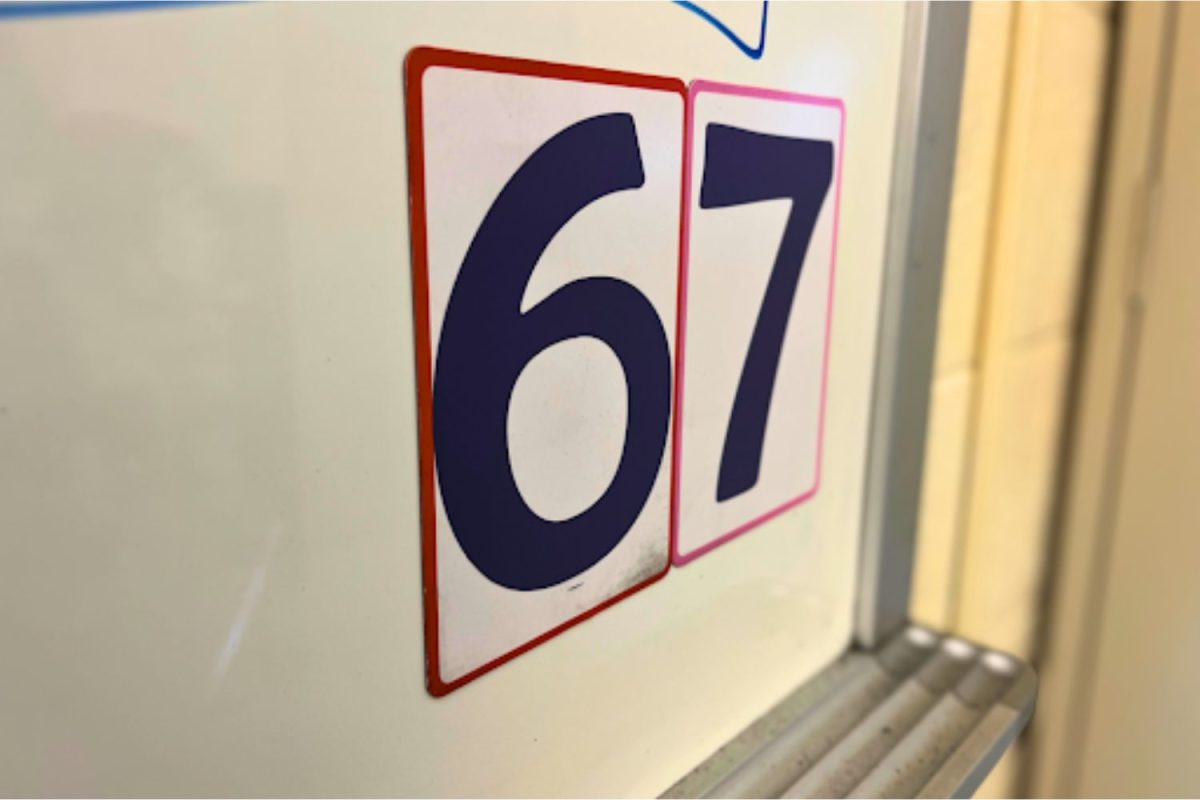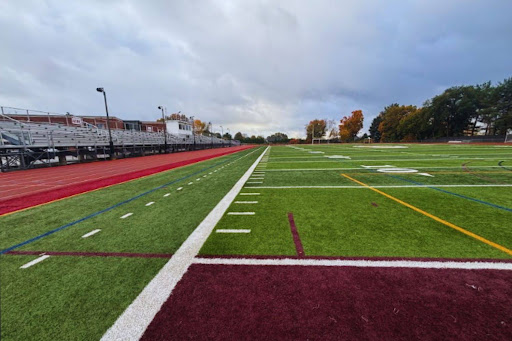High oil in school pizza highlights unhealthiness of school lunches (
Judith Mohan)
Lunch is one of the only breaks most students get throughout the day, a time for the enjoyment and consumption of a mid-day meal. However, students have found flaws in the wider lunch system across the nation, and are concerned about its effects on their lunch tray.
Many point to the Healthy Meals, Healthy Kids Act as the origin of many issues at lunch. The act was passed to reduce child obesity rates and allow children to have healthier meals. While the program did work at lowering obesity rates, there are still many flaws with the current school lunch system that have plagued schools since the law was passed.
Cafeteria food often leads to a lot of food waste. Fruits and vegetables are tossed in the trash bin constantly because students are forced to take the produce, despite having no interest in actually eating it. There are also many instances where the students don’t enjoy the food’s manufactured or health-caused taste, causing students to trash their entire meal.
Despite the issues with lunch there are an abundance of solutions both here at South Windsor and across the nation.
For instance, having an open campus policy for lunch time or allowing established restaurants to operate in the cafeteria would allow students to be able to get whatever food they want, promoting both the local economy and the reduction of waste.
“While the lunch is convenient, an open campus or having restaurants inside the cafeteria may lead to a decrease in food waste, a boost in the economy, and overall better-tasting food leading to happier students,” senior Kevin Joseph said.
Some of these flaws students have noted with our specific cafeteria’s food include the general unappetizing looks of the dishes and, more importantly, the actual nutritional content of the food. For example, according to the South Windsor NutriSlice website, one classic American cheeseburger comes to 430 calories and 75 mg of cholesterol, while a cheeseburger from the local McDonald’s is only 313 calories and 41.6 mg of cholesterol.
“I feel as if we were truly going for healthy food there would be other ways of doing it rather than the greasy pizza they sell every day, and if I was going to eat unhealthy, might as well make it food I’d enjoy,” senior Zach Bossy said.
Furthermore, another staple of the school lunch, the pepperoni pizza, also comes in at 430 calories. With the daily average calorie limit of 2,000 kcal, the pizza makes 21% of the daily value, not even considering the sides or drink that accompany the dish or even extra items that may be purchased by students.
Similarly, the school’s pizza option costs $4.00 in comparison to the $3.00 slices from one of South Windsor’s local pizzerias, Sal’s Pizza.
“4 Dollars for a slice of pizza is crazy, while Sal’s Pizzeria, which is a 4-minute drive from the school, gives bigger and better slices for 3 dollars,” said sophomore Jaxson Hills
What makes matters worse is the fact that despite the food’s lack of nutritional value, it is significantly more expensive, smaller, and higher in calories than just grabbing a meal from elsewhere. For instance, a cheeseburger from school comes to about $4.00 with sides, usually milk, a starch, and a fruit or vegetable. Meanwhile, according to the McDonalds app, a cheeseburger and a large drink cost $3.78, with the store often offering complimentary French fries with the app. Thus, making the McDonald’s meal a statistically lower calorie and cheaper lunch.
These are not issues exclusive to South Windsor High School, instead being problems throughout America’s lunchrooms. There is no doubt that the Healthy Meals, Healthy Kids Act helped America’s children, but the legacy of the law has done harm to students’ abilities to make their own choices and enjoy their break in the day. Overall, it would be incredibly beneficial to free the lunch room, giving students the chance to have cheaper, healthier, and tastier meals and be empowered to make their own choices.

















